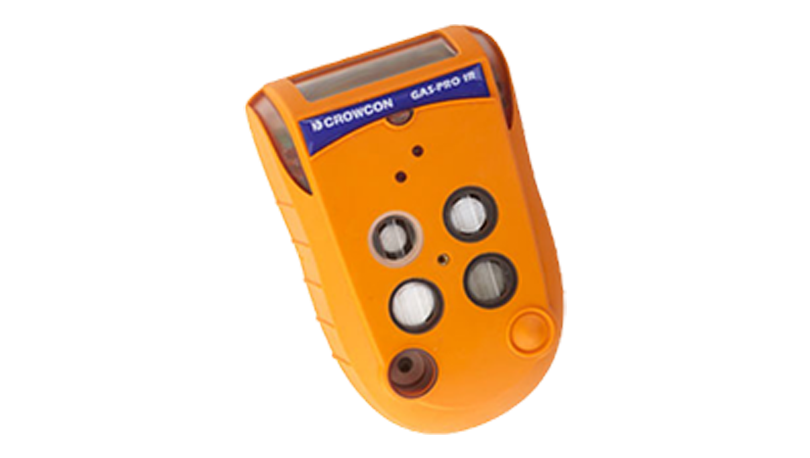
Co
Tlenek węgla
Powstający w wyniku niepełnego spalania paliw węglowych tlenek węgla (CO) jest bezbarwnym, bezwonnym, pozbawionym smaku, trującym gazem, często nazywanym "cichym zabójcą".
Tlenek węgla jest obecny w kilku różnych branżach, takich jak przemysł naftowy i gazowy, produkcja żywności i rafinacja ropy naftowej. Tlenek węgla wiąże się z hemoglobiną we krwi, zmniejszając dostarczanie tlenu do ważnych narządów, potencjalnie prowadząc do poważnych skutków zdrowotnych lub śmierci. Nawet niskie stężenia CO w zamkniętych przestrzeniach mogą być niebezpieczne, co sprawia, że monitorowanie jest niezbędne.
Bezbarwny, bez smaku i zapachu
Wytwarzane przez spalanie paliw węglowych
Wysoce toksyczny, może powodować śmierć
Może gromadzić się w zamkniętych lub słabo wentylowanych pomieszczeniach.
Stwarza ryzyko pożaru i wybuchu
Więcej informacji o TLENKU WĘGLA
| Zagrożenie | Wysoce toksyczny, łatwopalny gaz |
| Klasyfikacja | Niezwykle toksyczny gaz |
| Limity ekspozycji |
(OSHA) PEL\TWA: 50 ppm (ACGIH) STEL: 400 ppm/ 15 min. (OSHA) IDLH: 1500 ppm / 30 min. |
| Obecne branże | Ropa i gaz, produkcja żywności i rafinacja ropy naftowej |
| Wpływ na zdrowie | Niedotlenienie, bóle głowy, zawroty głowy, dezorientacja, nudności, potencjalna śmierć |
| Wpływ na środowisko | Przyczynia się do zanieczyszczenia powietrza w miastach, może wpływać na globalną chemię atmosferyczną |
| Czas trwania w powietrzu | Może utrzymywać się w atmosferze do 2-3 miesięcy. |
Ze względu na swoje bezwonne, bezbarwne i bezsmakowe właściwości, tlenek węgla jest niewykrywalny dla ludzkich zmysłów, co oznacza, że może minąć trochę czasu, zanim zdasz sobie sprawę z zatrucia tlenkiem węgla.
Tlenek węgla łatwo wiąże się z hemoglobiną we krwi, uniemożliwiając dostarczanie tlenu do tkanek i narządów. Zatrucie niskimi dawkami tlenku węgla może objawiać się bólem głowy, zawrotami głowy, osłabieniem, nudnościami, wymiotami, dezorientacją i bólem w klatce piersiowej. Wysokie dawki mogą prowadzić do utraty przytomności, uszkodzenia mózgu lub śmierci. Długotrwała ekspozycja na wysokie poziomy może być śmiertelna.
Ryzyko wybuchu występuje również, gdy CO gromadzi się w zamkniętych przestrzeniach w stężeniach od 12% do 75%.
Jeśli podejrzewasz narażenie na CO, natychmiast opuść to miejsce i wyjdź na świeże powietrze.
W przypadku wdychania należy przenieść się do miejsca ze świeżym powietrzem, wezwać służby ratunkowe i podać tlen, jeśli jest dostępny. Jeśli osoba jest nieprzytomna, należy przeprowadzić resuscytację krążeniowo-oddechową i skontaktować się z lekarzem.
Jak wykryć TLENEK WĘGLA
Potrzebujesz porady eksperta?
Zespół Crowcon jest liderem w branży wykrywania gazów i posiada wieloletnie doświadczenie w pracy z substancjami takimi jak tlenek węgla. Jeśli potrzebujesz porady w zakresie wykrywania gazu i bezpieczeństwa, członek naszego zespołu jest zawsze pod ręką, aby pomóc Ci w znalezieniu najlepszych zasobów i porad, które zapewnią bezpieczeństwo Tobie, Twojemu zakładowi i Twojemu personelowi.
Przeczytaj o polityce prywatności Crowcon Polityka prywatności i plików cookie tutaj. Jeśli zmienisz zdanie, możesz zrezygnować z subskrypcji w dowolnym momencie





















